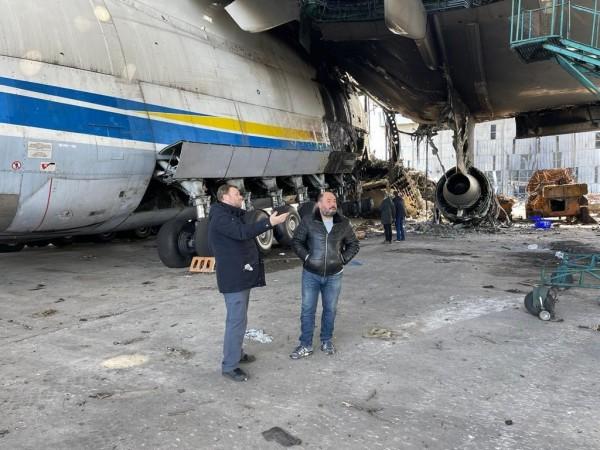Will the AN-225 ever hit the skies again? The world's largest plane or the world's largest cargo transporter was wrecked beyond recognition at the end of February this year at its home base, Hostomel airfield near Kyiv.
Aviation enthusiasts across the world have woven faint hope in their condolences ever since. Will it ever be able to fly again? Answering that question will require the assessment of the damage already done and experts opine, that depends on whether the damage (big or small) can be repaired. Bluntly put, most likely no. But there's no stopping hopes.

"The dream will never die," tweeted the Antonov Company, the Ukrainian aircraft designer, manufacturer and service company, while also referring to AN-225's nickname Mriya, which means dream in Ukrainian.
Earlier last week, a meeting of the representatives of the company was held to inspect and preliminary estimate the state of the Kyiv-Antonov 2 airport, its infrastructure and aircraft, which stayed at the airfield's territory during the Russian occupation.
The photographs of the wreckage left no doubts on the condition of the place. And the condition of the plane further dispelled any hopes on the possibility of a repair. "The nose of the plane was completely destroyed, seemingly the victim of a direct artillery hit," says CNN's Vasco Cotovio, who reportedly has seen the wreckage up close during a visit to Hostomel airfield.
For anyone clued into Moscow's method of operation in its Ukrainian invasion, knows how Hostomel airfield has been a spot of intense between the two forces since early days of war. Russian forces have tried to seize the airfield to use it as a forward operating position.
By now viral photographs of the aircraft, which has been destroyed beyond recognition, also show it is not just the nose that took a complete hit, but even the wings and engines have been extensively damaged. Aviation engineers have concurred, how had the nose not been hit, maybe AN-225 would have been salvaged.
Andrii Sovenko, a Kyiv-based engineer and aviation expert, has compiled a detailed list of the damage by looking at the large pool of videos and photographs of the wreckage, reported the CNN. Sovenko has also worked for the Antonov Company since 1987 and has flown AN-225 as part of its technical crew.

Why it can't be restored, ever
What also makes the damage beyond repair is the fact that many parts of the plane, the nose, the cockpit, plane's onboard systems and equipment are from an era when the plane was built, in the 1980s and hence they are no longer being manufactured. That more than negates the tail section of the plane which reportedly can be salvaged.
But eventually, that's not enough to put the aircraft back in the skies. Instead, the only practical conversation now seems to be whether a new Mriya can be constructed? Even then, given the technology advancements and evolution, it'll be impossible to expect the exact same aircraft with the exact same design. Replicating a forty-year old technology just to relive nostalgia would be pointless.
Myria, the Ukrainian dream
It was never conceived and constructed to carry commercial cargo in the first place. That job was allocated after the aircraft underwent major construction changes in the 90s. Antonov AN-225 was built in the 1980s to ferry the Soviet Space shuttle. After the Cold War, the plane got repurposed into the world's largest cargo transporter.
Ukrainian national news agency, said that building another Myria would cost $3 billion. Several in the industry countered that figure and instead pegged it between $350 mn to $500 mn. Even then, who'll sponsor that cost? Even funds raised specifically to revive Myria or construct a new one, will not be enough.
Between a world divided into optimists and realists, we know who most often wins. Though, sometimes it can be the optimist too. Antonov CEO Sergii Bychkov has, meanwhile, launched a campaign to resurrect the plane.
There shouldn’t be a Ukraine without an Antonov An-225 Mriya.
— Illia Ponomarenko ?? (@IAPonomarenko) April 15, 2022
Let’s find money and complete the second aircraft as part of Ukraine’s postwar restoration plan. pic.twitter.com/xP74pDnLtx
Also Read














